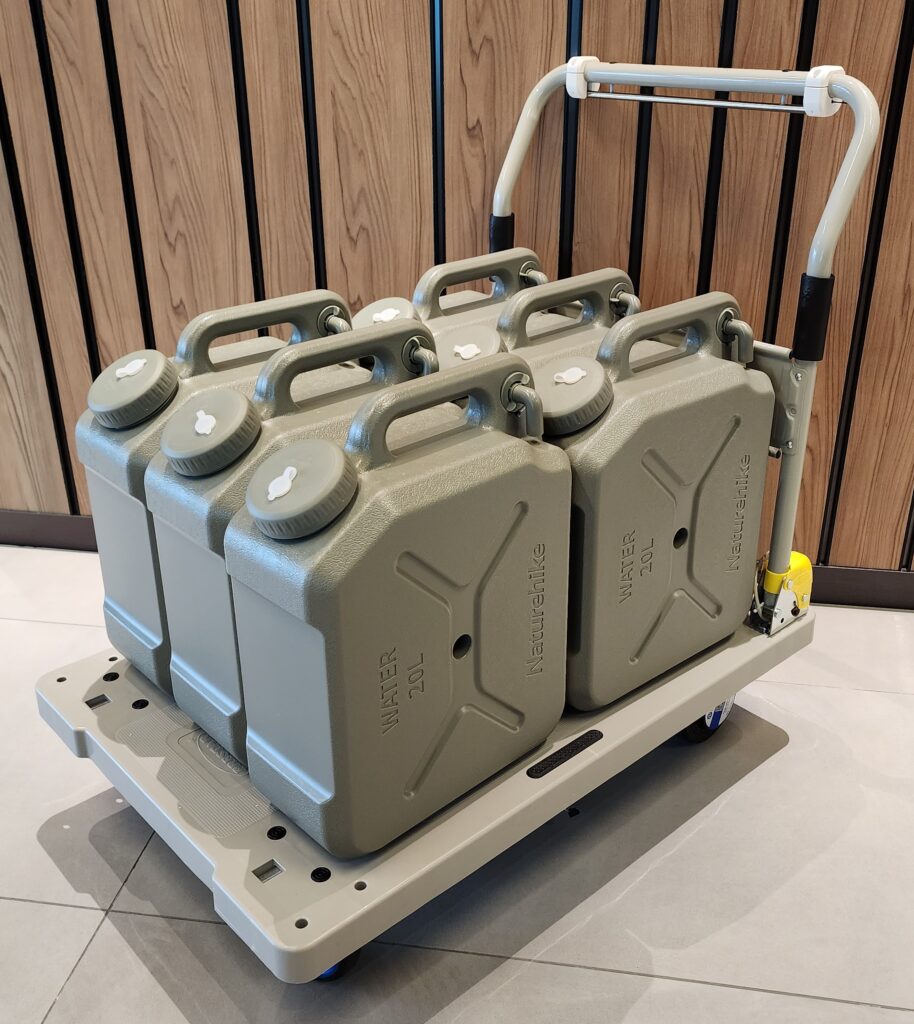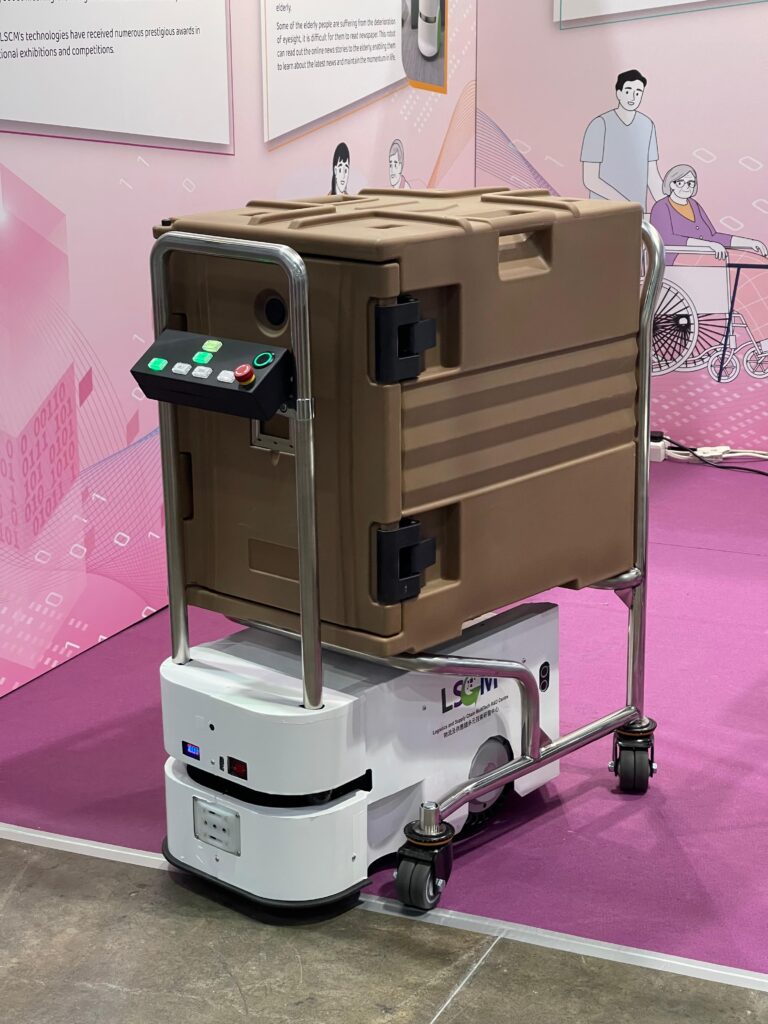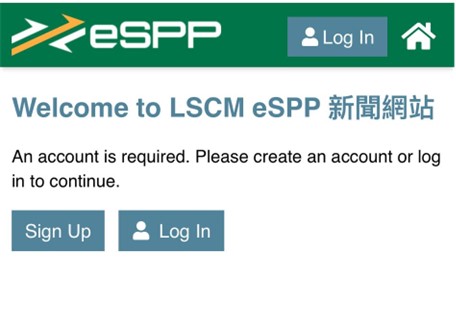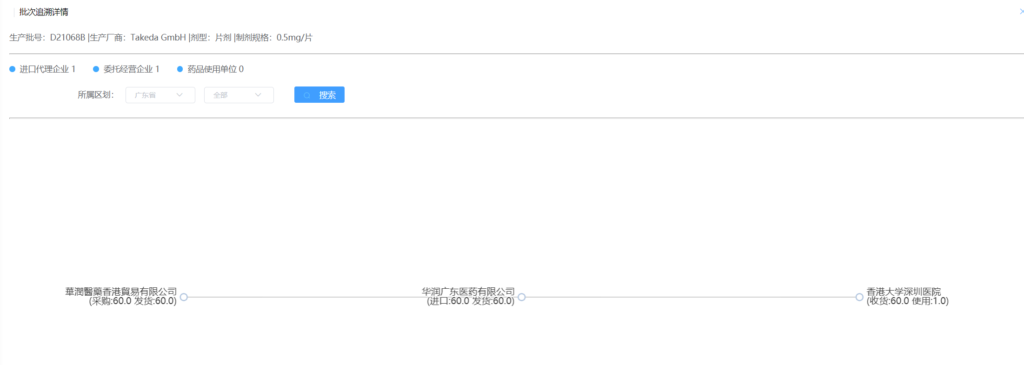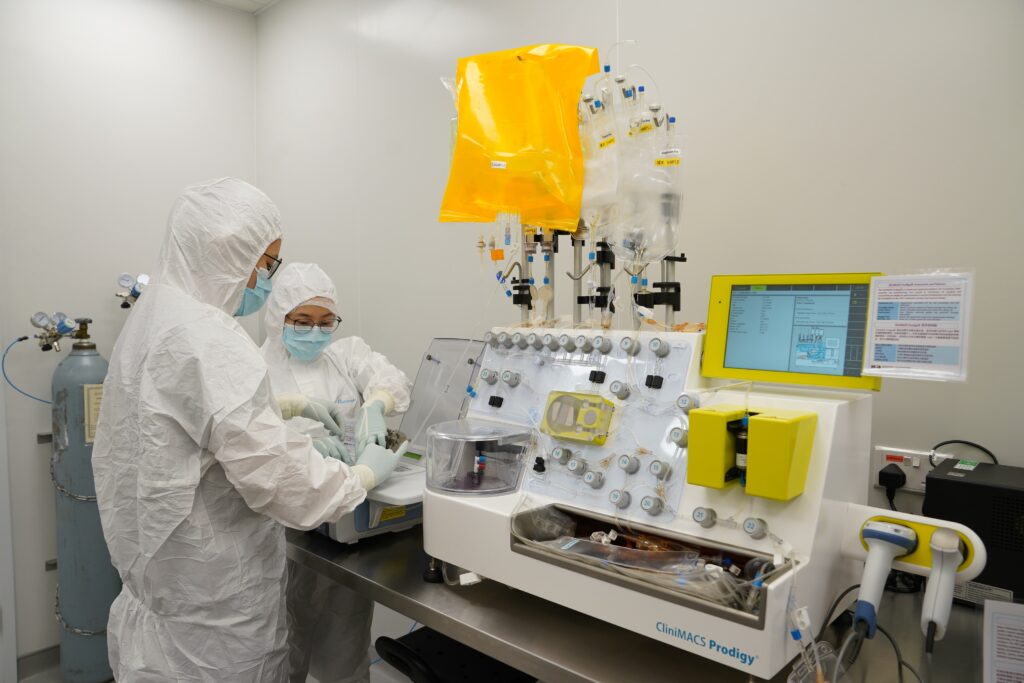LSCM Showcase
Electronic Power Assist Trolley System
This Electronic Power Assist Trolley System is equipped with an intuitive control function. Electronic sensors are strategically embedded in the trolley handlebar to measure the micro deformation of the materials when force is applied by the user. Based on the sensors’ value, the onboard AI controller calculates the torque vector at a frequency of 100 times per second. The torque is then amplified by two motors connected to the wheels of the trolley to control the steering, forward movement and backward movement of the trolley easily.
The use of the Electronic Power Assist Trolley System is the same as the traditional trolley, but it makes transporting heavy items easier and more efficient. The operator can control this trolley system to transport heavy items with ease, which helps to minimise the risk of workplace injuries. Additionally, the trolley’s built-in power regeneration and brake system allow the trolley to be safely used on ramps.
Follow-me Robot
With the aging population, the elderly service industry requires innovative technologies to alleviate the workload of the workers. Different from the other robots, LSCM developed the Follow-me Robot with platooning technology which not only can help the workers deliver heavy items but also can follow the workers in both indoor and outdoor environments. The robot is also equipped with automatic collision avoidance technology, which can prevent collisions with others when it is in use.
e-Smart Port Platform
LSCM has been working with the Transport and Logistics Bureau to develop the e-Smart Port Platform (eSPP). It is a data-smart infrastructure and an inter-organisational software platform to facilitate the sharing of port and logistics information in the port community. eSPP deploys blockchain technology, smart contracts, advanced loT and global positioning technology, etc. with a view to track and visualise the global supply chain and port logistics efficiently.
eSPP also includes a News Portal App which gathers industry news, reports, blogs, and other useful information for the port community's reference and discussion.
Cross-boundary Blockchain for Pharmaceutical Logistics Information Management
To facilitate the policy of allowing Hong Kong registered drugs and medical devices to be used in designated Hong Kong public hospitals in Guangdong-Hong Kong-Macao Greater Bay Area, LSCM developed the technology to address the issues related to cross-border circulation of pharmaceuticals, including standard compatibility, privacy protection, cross-boundary data sharing, and data coordination.
This project aims to establish a secure and efficient channel for data exchange, and to provide a one-stop cross-boundary pharmaceutical circulation and regulation platform to facilitate the work of pharma distributors, and healthcare institutions in Hong Kong and in the GBA, as well as the regulatory authorities in both Mainland China and in Hong Kong.
Digital Supply Chain Logistics Management Platform for Cell & Gene Therapy Product Manufacturing
The Hong Kong Institute of Biotechnology (HKIB) Advanced Therapy Products Good Manufacturing Practice Center (ATP GMP Centre) is at the forefront of producing Chimeric Antigen Receptor T-cells (CAR-T) treatments locally, offering CAR-T products manufactured in Hong Kong to reduce the time for waiting overseas, production, transportation, and the high costs.
To accelerate translational medicine research in Hong Kong and the Greater Bay Area, and to expand its global reach, it is crucial to build the ability to export locally produced Advanced Therapy Products (ATPs) for cutting-edge clinical trials. Therefore, the operational workflows of CAR-T cell manufacturing require a comprehensive, efficient and accurate digital manufacturing and supply chain system. This system supports AI Machine Translation technology, providing specialised language translation services tailored to the domain of cell gene therapy. To ensure the security and integrity of the system, blockchain technology and continuous re-authentication technology are utilised.

